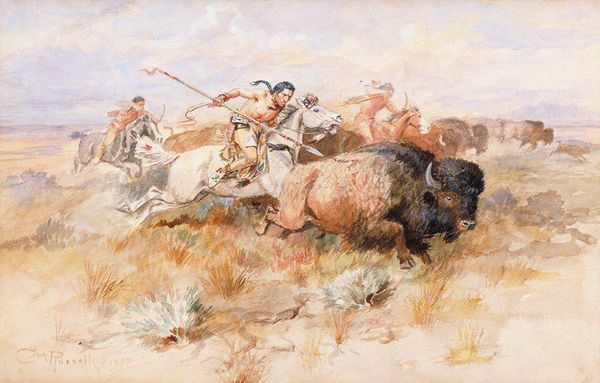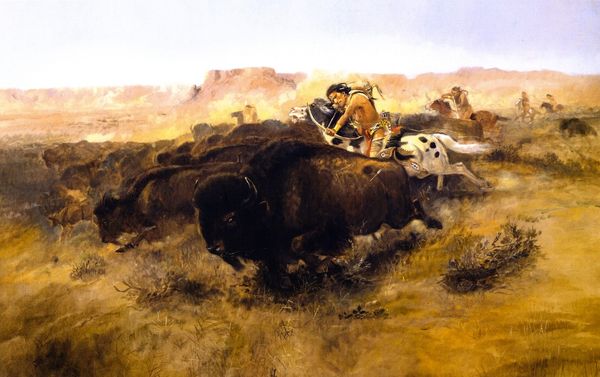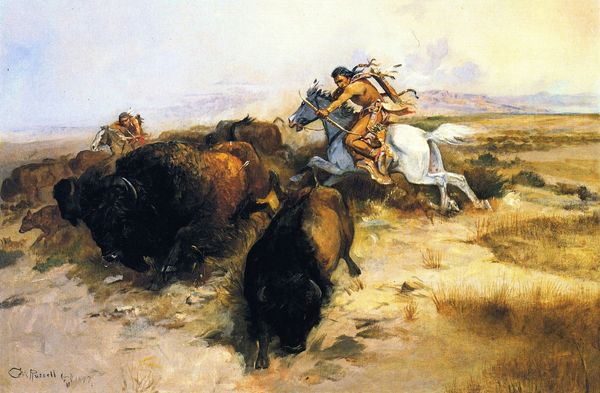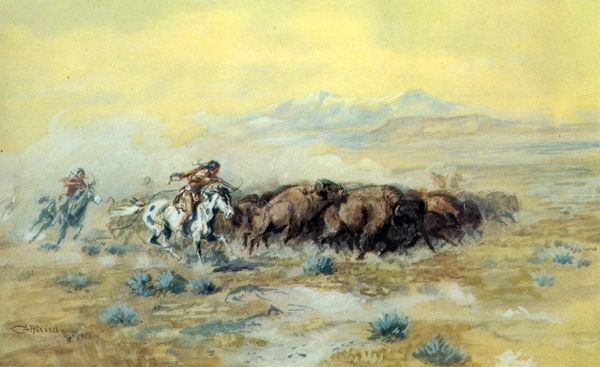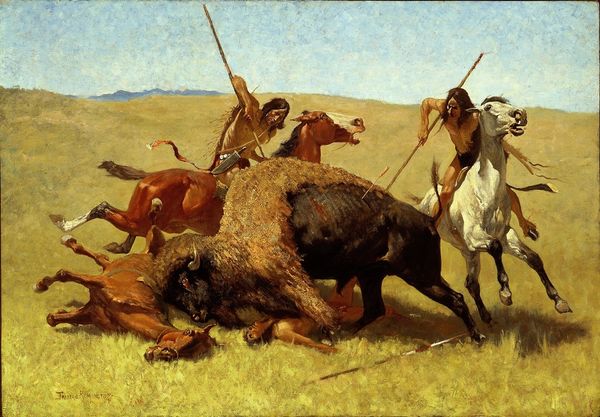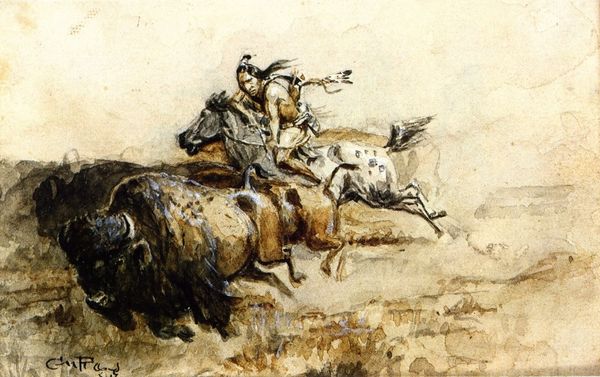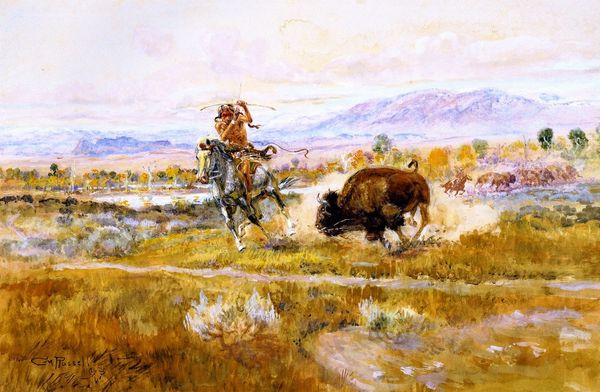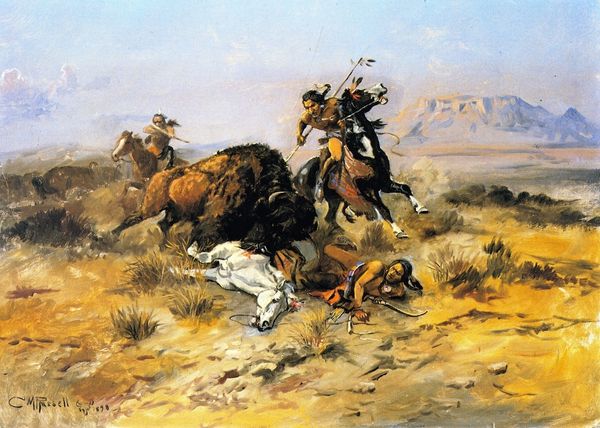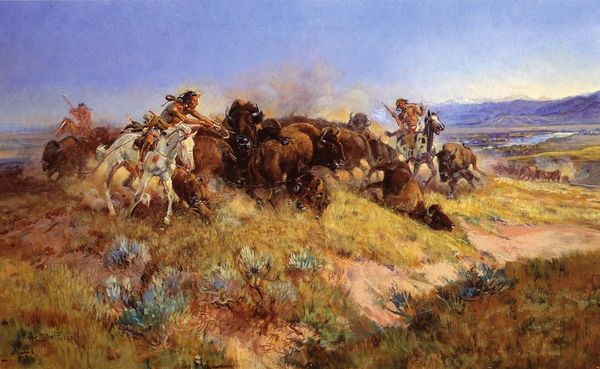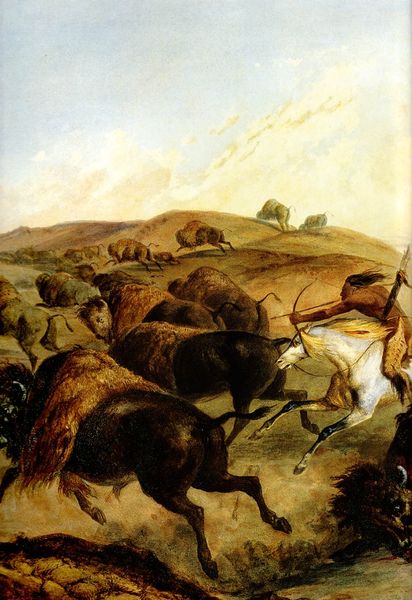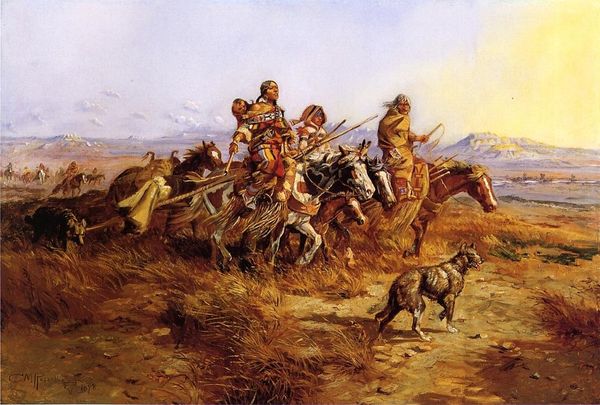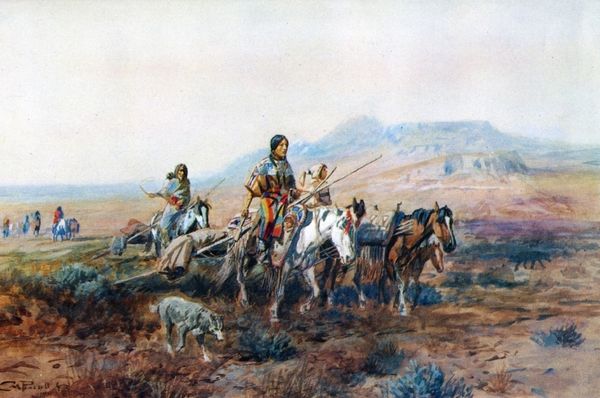
painting, oil-paint
#
painting
#
oil-paint
#
landscape
#
figuration
#
oil painting
Copyright: Public domain
Curator: Immediately striking. A dust-filled, ochre scene infused with tension and movement. Editor: That's an apt description. This is "Meat for the Tribe," painted by Charles M. Russell in 1891 using oil paint. It presents a bison hunt on the American frontier. Curator: The dynamism is remarkable. Notice the lines of the bison’s bodies – powerful and charging. And the rendering of the Native American figure atop the horse, spear in hand, almost as a single unit of force. The interplay of curves and sharp angles drives the action forward. Editor: Absolutely. Russell’s work frequently mythologized the West, presenting romanticized and arguably simplified accounts of historical events and Indigenous cultures. How does that visual storytelling sit with you in this context? Curator: Aesthetically, the brushwork in the background suggests vast space, crucial for understanding how the painter frames his narrative. I am thinking about the interplay between foreground and background: this is not merely documentary painting; it's a narrative orchestrated through careful arrangement of forms and colors. Editor: Indeed. This artwork romanticizes conquest and subsistence. Consider the title: it subtly diminishes the inherent violence of the hunt by focusing on survival. The tribe remains unseen, rendered passive, dependent on the active male hunter, a very stereotypical reading of indigenous people as always in need. Curator: The earth-toned palette evokes the rugged landscape, undeniably. And if we focus solely on composition, the positioning of the hunter figure, slightly off-center, generates visual interest, pushing your eye deeper into the unfolding action. The tension arises from these choices, this juxtaposition. Editor: But it's also a constructed gaze, placing the viewer as a detached observer of a way of life vanishing due to colonial pressures. It speaks volumes about the popular representation of the American West in the late 19th century. Curator: Perhaps. Nonetheless, viewing it now invites a deeper investigation into not just what is shown but also the visual language Russell employed to tell this story. The lines, tones, the visual elements become incredibly vital lenses. Editor: Agreed. Its historical context demands reflection on representation, agency, and the legacies we continue to grapple with even now.
Comments
No comments
Be the first to comment and join the conversation on the ultimate creative platform.
